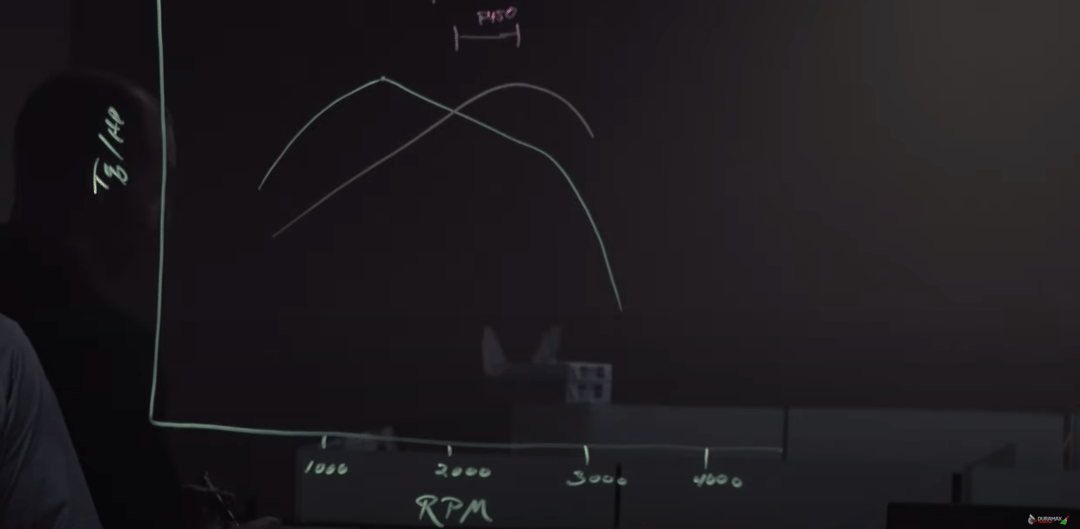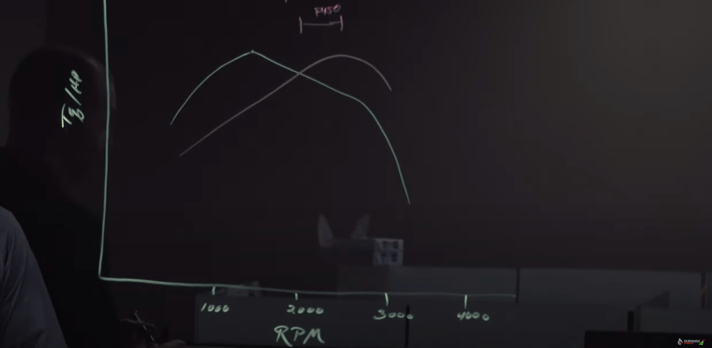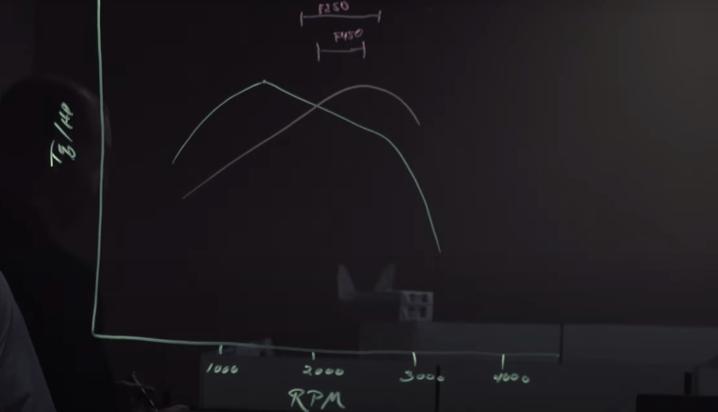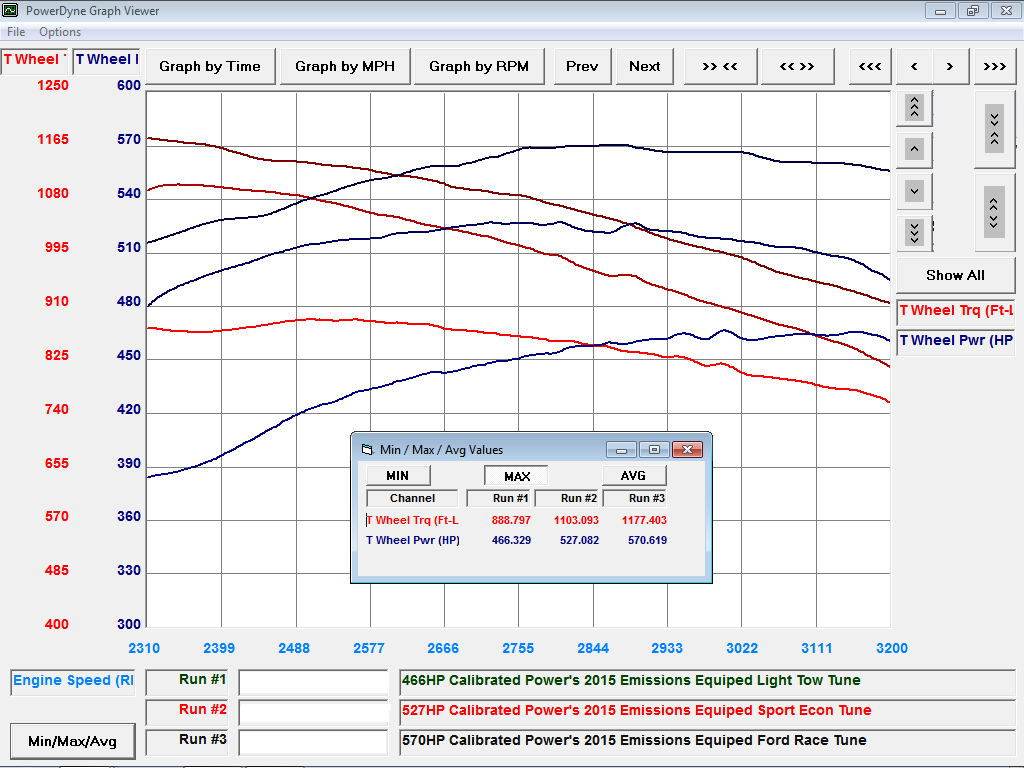Changing your gears and tire size will make a dramatic impact on your truck. While it's a common topic on the forums, it’s something a lot of us as diesel drivers want to know more about. Nick Priegnitz, owner of Duramaxtuner, gives us quite a detailed run down of how these two things impact your diesel truck with this Diesel Insights video.
The picture below is a graph depicting a dyno graph. As you can see on the chart the X-axis is RPM and the the Y-axis is torque/horsepower. The yellow highlighter line on the graph represents torque and the pink highlighter represents horsepower. As RPMs increase, torque peaks at roughly 1,500 or 1,600 RPM. Horsepower peaks at around 2,900 and they both fall off shortly past 3,000 RPM. This is very normal for the diesel trucks of today. It applies to Duramax, Cummins, and Power Stroke. The numbers you see in pink highlighter about the lines is the useable RPM range of the engine and how they are impacted by gears. During normal driving, you'll be cruising at that 1,100-1,500 RPM range. As you lean into the throttle more, you'll call for more RPM and boost. It'll use more RPM, it will shift out at 2,400-2,500 RPM. The reason for that is the higher the RPM, the more air flow the engine gets, the more power the engine can make.

These curves illustrate the power curve of the engine and they are going to show in the markings above the graph will highlight how different trucks with different gears and tires and where they operate in the maximum efficiency range. The maximum efficiency of the engine is right around that peak torque number.
Let’s start with the 2017/2018/2019 F-450. Why is this truck capable of towing so well and has the same power as the F250? The F450 comes with a 4.30 gear from the factory. The reason the F450 tows more than an F250, aside from tire size and hitch capacity is that it is running in it’s efficient range at all times due to the 4.30 gear. Under full load operating conditions it keeps the truck in a very narrow operating range. It says down near 2,300 - 2,400 RPM and keeping that shift less than 300-400 RPMs. The bigger gear is made specifically for that. 
Now let’s look at the F250. We notice first that the torque is more but the power is less. That truck is going to pull worse because of the smaller gears. As you see the operating range on this truck is a lot wider, which when trying to operate in the maximum efficiency window, it’s not. This is one reason why, although these diesel trucks are great for towing the F450 is literally made for that. The major reason is the gears.-2.jpg?width=849&name=2018%20Ford%20Power%20Stroke%20front%20dr%20corner%20(2)-2.jpg)
Take a look at the top line. This depicts the range of an F250 with 35 inch tires and 3.73 gears. Notice how much the operating range expands even further. It is operating in a wider window which is not going to make the truck run optimally. When it shifts, it drops even further. The lower in the rev range, the less power you have to pull through. If your shift extension is widening, you have to have the engine be more efficient in a wider range. Gears help alleviate that issue.
While we discuss not operating in the maximum efficiency range, let’s talk about some issues that may arise when you are doing that. Things you will notice while running above maximum efficiency is added heat and temperature in the exhaust system. The turbo charger is working at the end of it’s MAP as well. You are wasting a ton of fuel generating that power. On the lower end of running maximum efficiency will notice the engine not running the charger as well, it has trouble getting up to speed. It causes it to run a little rich, which can cause issues with your DPF by creating excessive particulate matter. Low engine speeds also run higher torque output, which can damage engine internals.
Remember if you have increased your tire size, the best thing to do is put in a gear set to help shorten that operating range to stay near that maximum efficient range is. You are helping it's reliability. It will help it's performance and keep your drive-ability optimal. Narrow that scope down and keep it efficient with a gear set. 
If you would like to talk to a diesel performance expert, please click the button above and one of the knowledgeable staff members will get back to your shortly.



